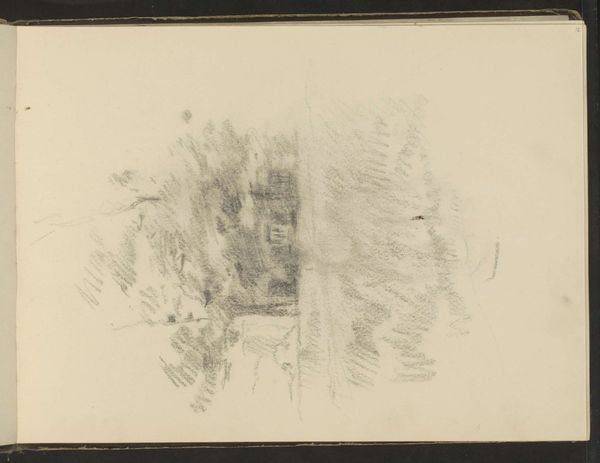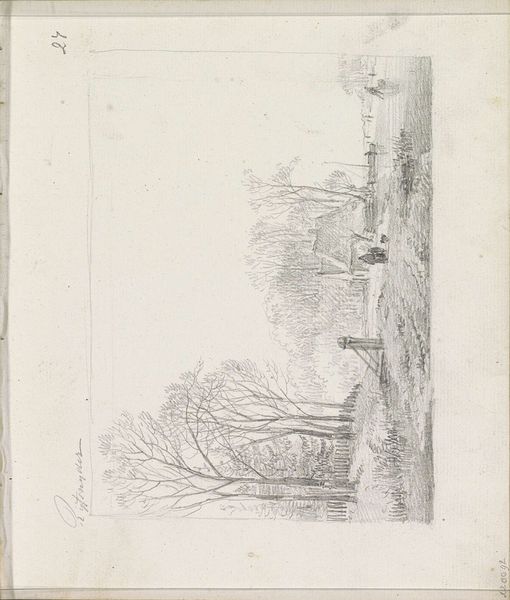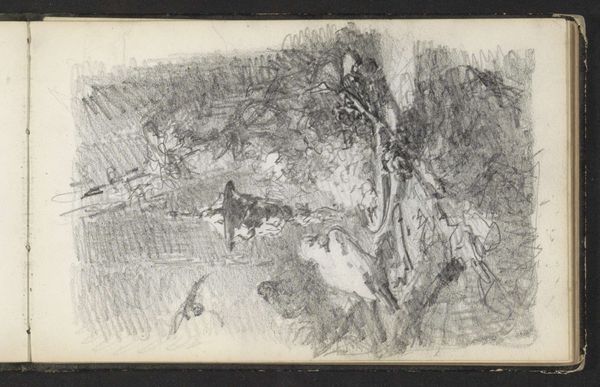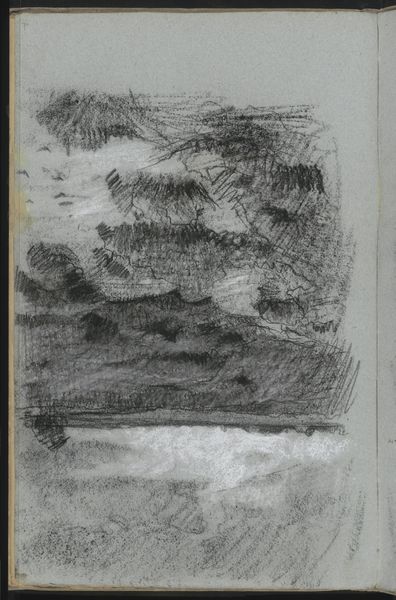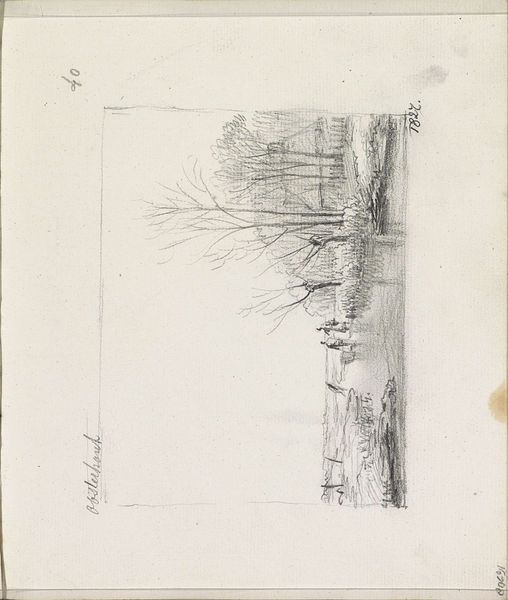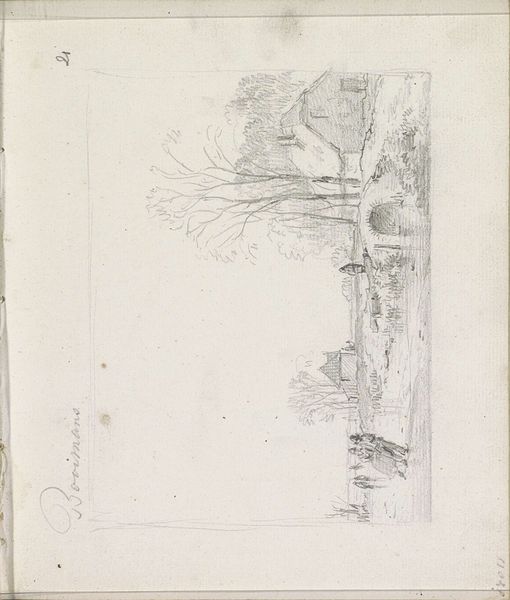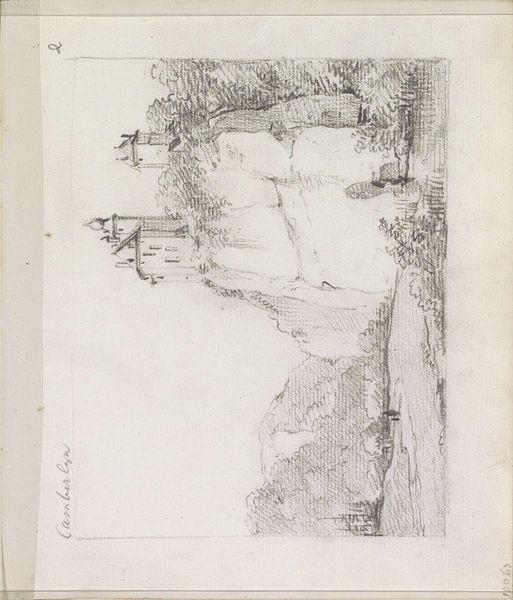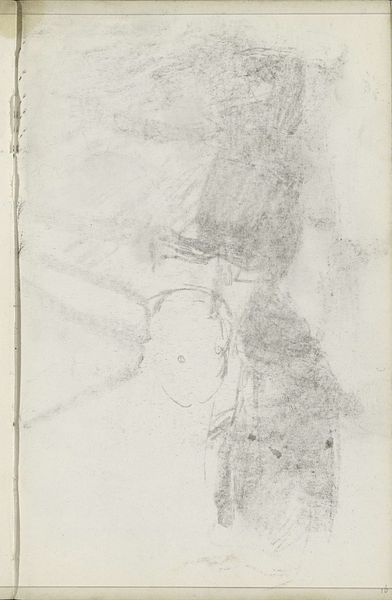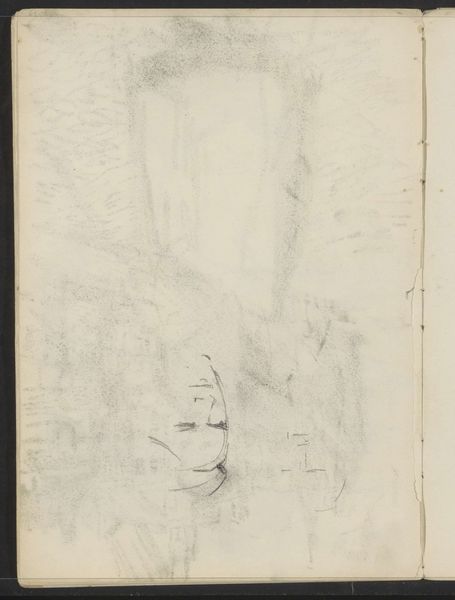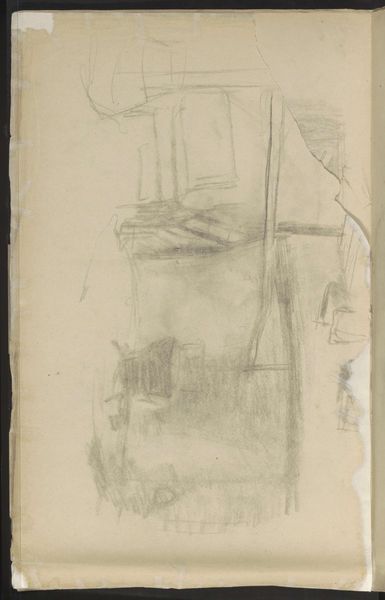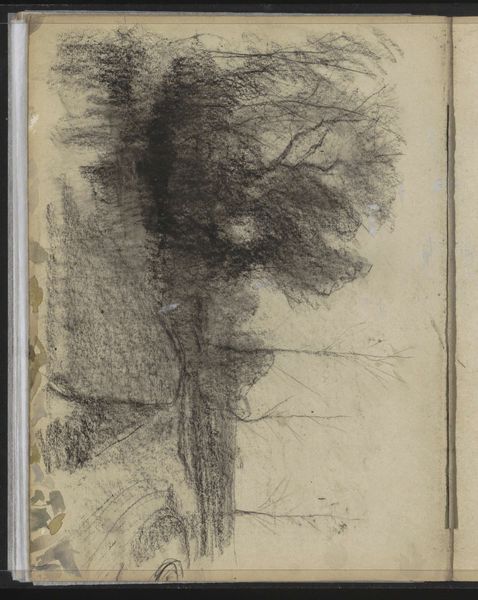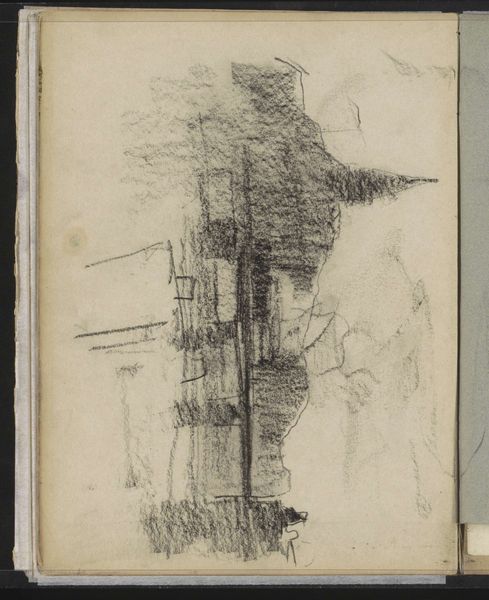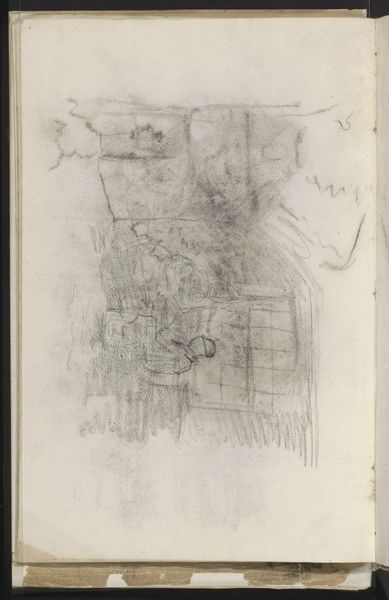
drawing, plein-air, pencil
#
drawing
#
impressionism
#
plein-air
#
landscape
#
pencil
Copyright: Rijks Museum: Open Domain
Albert Neuhuys sketched this “Garden Path with a Gate” with graphite on paper. The gate, a prominent symbol in this rustic scene, invites contemplation on the thresholds of life. Throughout history, gates have represented transitions and boundaries. From the gates of Ishtar in ancient Babylon, symbolizing entry into the sacred city, to the gates depicted in medieval tapestries, signifying access to different states of being, this motif carries profound significance. The gate suggests not only physical passage but also psychological and spiritual transformation. Observe how the artist renders the gate as a permeable barrier, partially obscured by foliage. The artist might be subconsciously engaging with the idea of the gate as a representation of both opportunity and uncertainty. Like Janus, the Roman god of gateways, the gate in this composition could represent looking back to the past while stepping into the future. This simple garden gate, then, resonates with echoes of art history and cultural memory. Its form is ever-changing, yet it remains a potent symbol of the human experience.
Comments
No comments
Be the first to comment and join the conversation on the ultimate creative platform.
